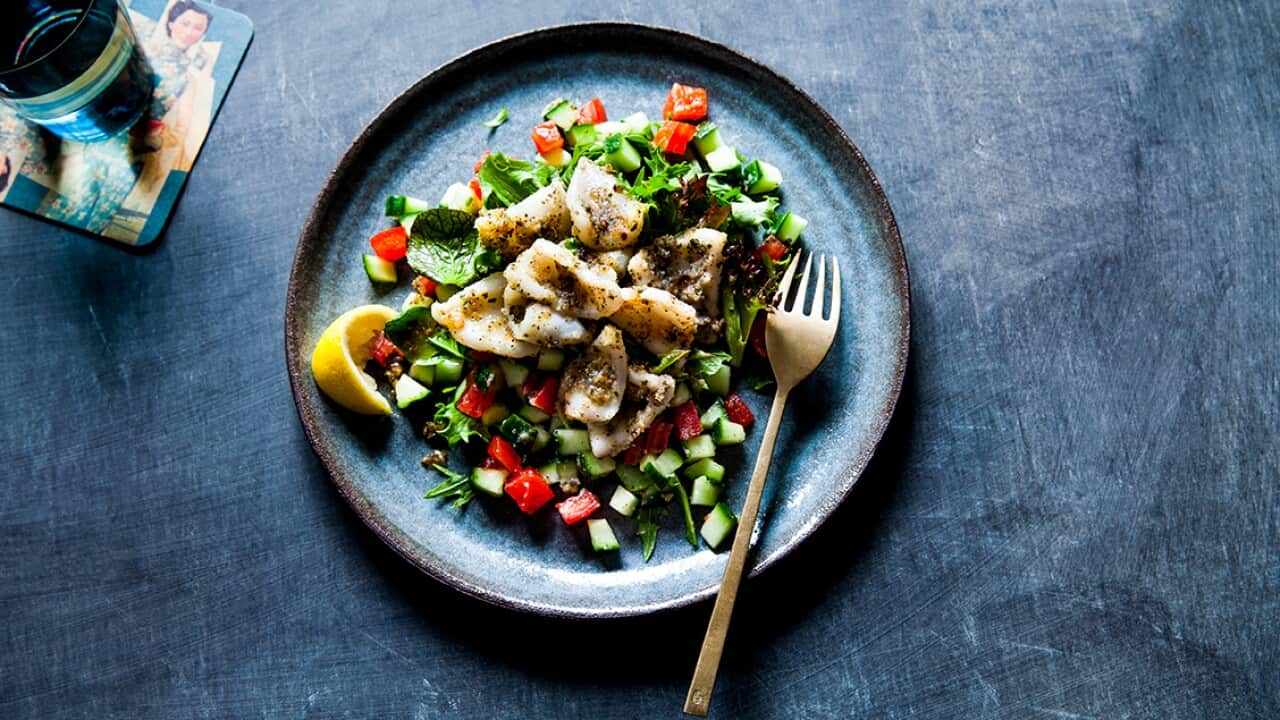Stream free On Demand

Chicken or Fish?
episode • The Cook Up with Adam Liaw • cooking • 25m
PG
episode • The Cook Up with Adam Liaw • cooking • 25m
PG
Growing up in the Kimberley, were always a major part of Jaru woman Samantha Martin’s life.
“You’d go out and shoot a turkey, chase a goanna, eat turtles out of the creek, or fish for bream or barra, just living off the land. Then seasonal plums and fruits would come into season. So, I grew up , being taught by my mother, my sisters, and my aunties about certain things that you can eat and can't eat. And just learning about how things are on Country and the importance of preserving knowledge”, says Martin, who is known as the .
“It was just part of my life. I just knew that, if we didn't have the shops, my family would be able to survive, eating off the land.”
As a TV presenter and author of the Bush Tukka Guide, she’s made it her mission to educate people on bush food and preserve the knowledge of bush tucker around Australia – as she does with the she shares in her appearance on
Stream free On Demand

Taste of the Tropics: Iconic FNQ
program • cooking • 2024
G
program • cooking • 2024
G
For a long time, native ingredients were primarily used by Indigenous communities and then later by fine-dining restaurants. Slowly, they have begun appearing in bakeries like , Indigenous-owned caterers like , and, in small quantities, on supermarket shelves.
Yet, when it comes to home cooking, most Australians still don’t have native ingredients in their pantries. According to Martin, this largely comes down to education and accessibility.
Indigenous ingredients: Tasty and nutritious
“My mission in life is to introduce bush tucker into people's lives so that they can use it in their kitchens like they’d use salt and pepper, rosemary or thyme,” says Martin.
She has noticed a growing curiosity about native foods. Still, she says many people remain unsure how to use native spices or game meats.
“People will say ‘Oh I've tried kangaroo, and I don't like it’. It might be that the taste of the game is too strong or that the texture is not for them, but maybe it was not cooked properly. They build an opinion on bush tucker from one experience, but there's so many different varieties of how to utilise bush tucker that can be so rewarding and so nutritional,” she explains.
She’d love everybody to know , from the vitamin C-packed to kangaroo, which is high in iron and protein, low in fat, and free from hormones and antibiotics.
Interestingly, some of the biggest fans of Martin’s Bush Tukka Guide are children, which is why Martin is releasing a kid-friendly version of the book later this year.
She feels hopeful when she sees their enthusiasm for bush foods: “They're the next generation that we need to target and teach and get them involved in this narrative of bush tucker and bush foods, and the preservation of it and the importance of native foods being in our backyard.”
Growing the Indigenous food industry the right way
While some native ingredients are available in supermarkets, they’re still easier to find in boutique shops, farmers’ markets, and online. Supply remains an issue as several of these foods are mostly foraged rather than farmed, like and .
If you’re keen to find these native ingredients where you shop, Martin says it can be as simple as asking: “If you ask your butcher to stock or kangaroo or wild geese, they will actually do it. If they know that there's an audience for it out there, they will order it.”
But while Martin wants to see Indigenous ingredients become more mainstream, success for her doesn’t mean large-scale commercial farms supplying big supermarkets.
She is on the board of directors for a new organisation called , which aims to support remote Indigenous communities in North Queensland in establishing bush tucker businesses. The business provides training and mentorship to help these communities enter the bush food industry.
“I would rather the communities take ownership of this. We want to bring employment and opportunities into remote communities, to our mob, as opposed to a big supermarket giant,” she explains, adding that there’s space for partnerships with non-Indigenous businesses, especially if they care about cultural integrity.
How to get started?
Herbs and spices are an easy and accessible entry point into the vast world of native ingredients.
Martin recommends keeping on hand the “queen of the herbs”, , which works beautifully with roast chicken, and makes a perfect substitute for bay leaf. Swap black pepper for earthy in stews and curries. Use fresh in salads or fry it tempura-style for a crunchy appetiser.
For those with a green thumb, growing native plants at home is another option; lemon myrtle, mountain pepper, and saltbush thrive in pots.
As Martin looks to the future of Indigenous ingredients, she sees a steady rise in their popularity.
“I think it's a real consistent growing market. It may have its spike sometimes and then it will have a lull and will become a trend again. But it's one of those industries that won't go away, but will steadily be in the marketplace for people who more adventurous with cooking, and more conscious of the way they eat,” she concludes.







